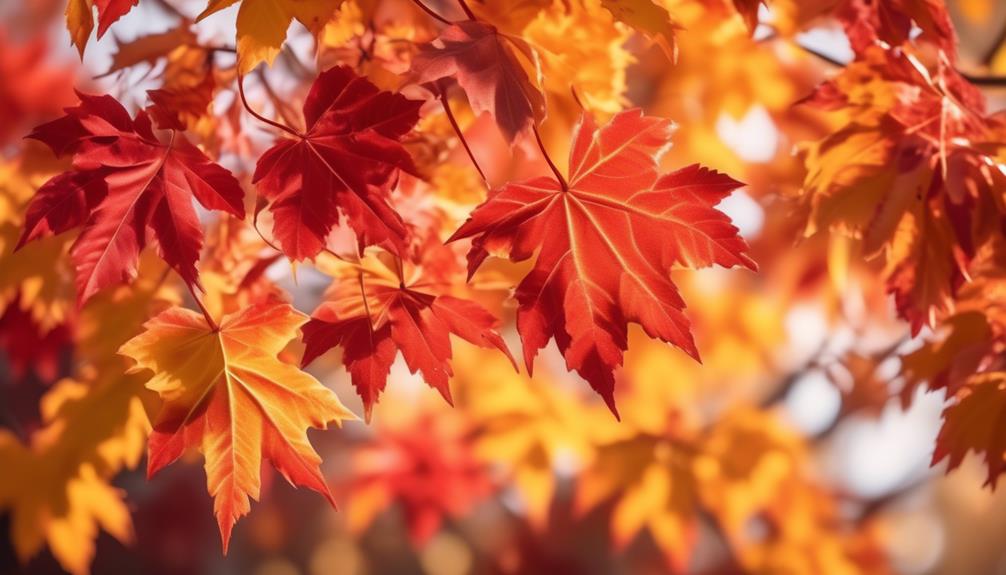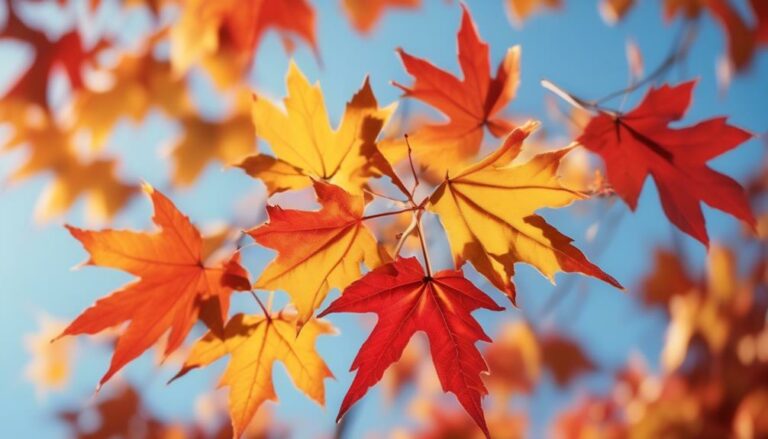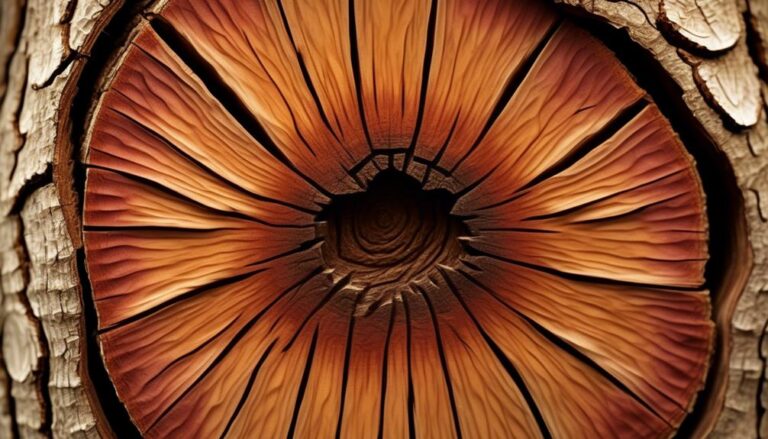Why Are Liquidambar Tree Species Valuable for Collectors?
Delve into the captivating world of collectors and discover why Liquidambar tree species hold such allure.
These remarkable trees possess a myriad of qualities that make them highly coveted. From their historical significance to their versatile uses in crafts and furniture, Liquidambar species offer a treasure trove of value.
But that's not all – there's something more, something that will pique your interest and keep you hooked.
So, let's embark on this journey together and unravel the secrets behind the appeal of Liquidambar tree species.
Historical Significance
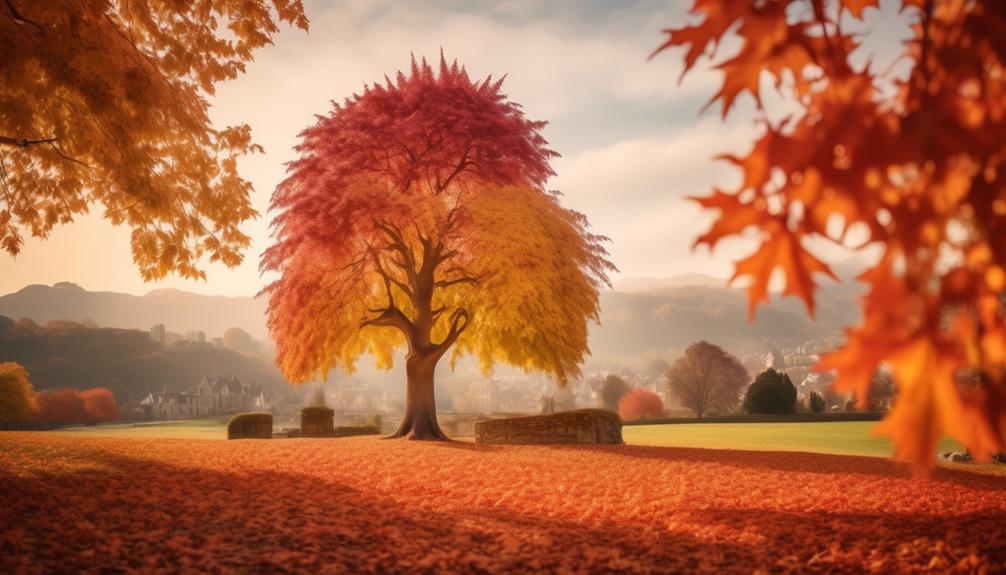
The Sweet Gum tree holds significant historical importance, dating back to the late 16th Century, when it was first noted by Spanish explorers in the American South for its resemblance to well-known Asian species. This resemblance sparked interest among collectors, making the Sweet Gum tree a valuable species for them.
Native American tribes, such as the Cherokee, recognized the medicinal value of the tree and used its resin and inner bark for various purposes. The Aztecs even traded the resin for incense.
In addition to its medicinal uses, the Sweet Gum tree played a role in Mexico's Civil War and North America's timber markets. Its spiny seed pods are considered powerful protection amulets in magical and spiritual circles.
All these historical connections make the Sweet Gum tree a valuable species for collectors seeking to preserve and celebrate its diverse cultural significance.
Unique Foliage Patterns
After exploring the historical significance of the Sweet Gum tree, let's now turn our attention to its unique foliage patterns. These patterns are one of the main reasons why sweet-gum trees are highly valued by collectors. Here are four interesting facts about their foliage:
- The leaves of sweet-gum trees have a distinct palmately lobed shape, resembling a star. This unique foliage pattern adds visual interest and makes the tree stand out among other species.
- During the fall season, the foliage of sweet-gum trees undergoes a stunning transformation. The leaves turn vibrant shades of red, burgundy, purple, and sometimes even orange or yellow. This colorful display is a true spectacle to behold.
- The unique foliage patterns of sweet-gum trees contribute to their ornamental value. They're often used in landscaping and urban environments to enhance the visual appeal of parks, gardens, and streetscapes.
- Collectors are particularly drawn to sweet-gum trees because of their distinctive foliage. They appreciate the beauty and rarity of these unique patterns, making them highly sought after in the collector's market.
Vibrant Autumn Colors
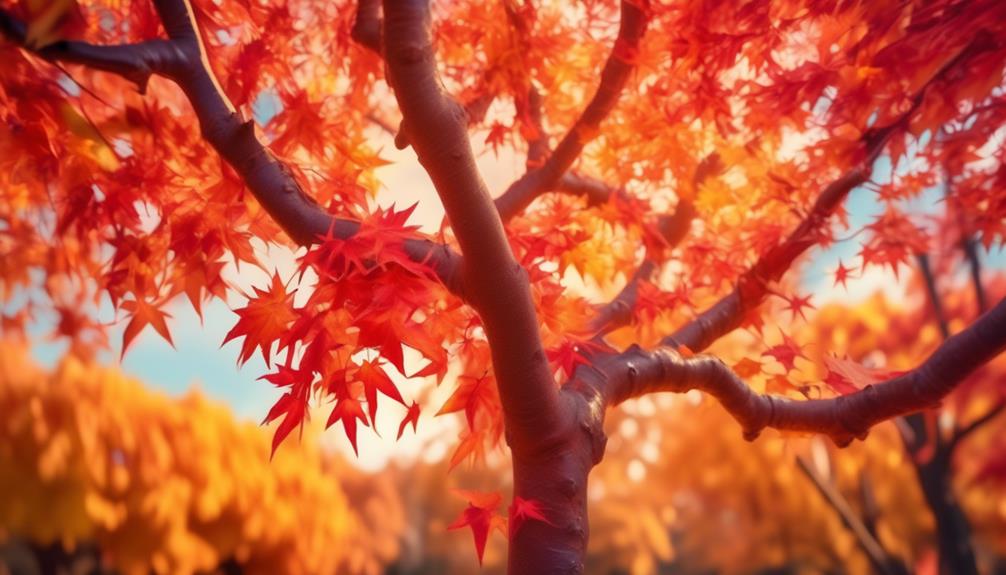
With their vibrant autumn colors, sweet gum trees create a stunning display that adds beauty and charm to any landscape. The leaves of these liquid amber tree species turn bright shades of red, burgundy, purple, and sometimes orange or yellow in the fall. This vibrant foliage is a key feature that makes sweet gum trees highly valued as ornamental trees.
Their vibrant autumn colors contribute to their popularity in landscaping and urban environments. The vivid hues of the sweet gum trees' leaves add aesthetic value and create a visually striking scene. Whether lining streets or gracing gardens, the vibrant autumn colors of sweet gum trees make them a popular choice for collectors and nature enthusiasts alike.
Exquisite Fragrance
As you explore the vibrant autumn colors of sweet gum trees, you'll discover another captivating aspect that adds to their allure: their exquisite fragrance. The fragrant resin, known as styrax, produced by sweet-gum trees isn't only commercially valuable but also highly prized in traditional Chinese medicine for its medicinal properties. This fragrance sets liquidambar tree species apart, making them valuable for collectors.
Here are a few reasons why the fragrance of sweet gum trees is so captivating:
- Commercial Value: The fragrant resin from sweet-gum trees is in high demand due to its exquisite fragrance, contributing to its economic value.
- Ornamental Cultivation: Sweet-gum trees are highly valued for their ornamental cultivation, with their fragrance enhancing the overall appeal of landscapes and gardens.
- Traditional Medicine: The roots and bark of sweet-gum trees are locally prized in traditional Chinese medicine for their exquisite fragrance and medicinal properties.
- Collector's Delight: The unique fragrance of sweet gum trees makes them a valuable addition to collectors who appreciate their aromatic qualities.
The exquisite fragrance of sweet gum trees adds another layer of desirability to liquidambar tree species, making them highly valued by collectors.
Rare and Limited Availability
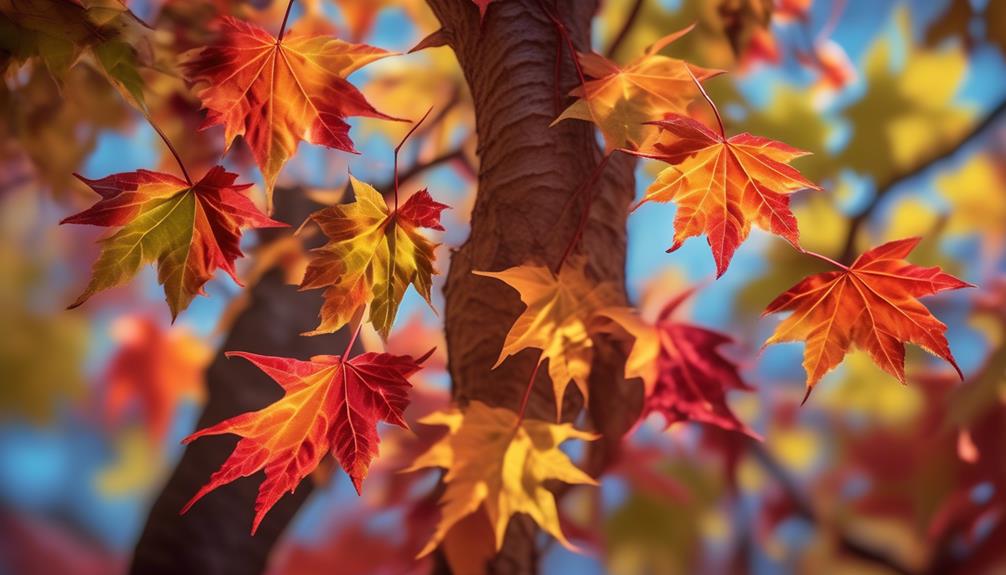
Liquidambar tree species, prized for their unique characteristics, are highly sought after by collectors and enthusiasts due to their rare and limited availability. These trees are valuable additions to any collector's garden or arboretum, as their scarcity makes them a prized possession.
In the wild, Liquidambar species can be difficult to find, and their limited availability in cultivation only adds to their allure. Certain Liquidambar species are so rare that they're highly coveted among plant collectors, driving up their value in collecting circles. The rarity of these tree species adds to their desirability, making them a valuable find for collectors who appreciate their beauty and uniqueness.
With their limited supply, Liquidambar tree species are truly a treasure for collectors.
Cultural and Symbolic Importance
Culturally and symbolically significant, Liquidambar trees hold a special place in traditional practices and landscaping due to their ornamental value and medicinal properties. Here are some reasons why these sweet gum trees are valued by collectors:
- Traditional Chinese Medicine: The roots and bark of Liquidambar trees are used in various medical treatments, reflecting their cultural importance and medicinal significance.
- Ornamental Value: Certain species of Liquidambar trees are cultivated for their beauty, making them a symbol of aesthetic appeal in landscaping and urban environments.
- Fragrant Resin Production: Liquidambar trees produce a fragrant resin, adding to their cultural significance and economic value. This resin is utilized in various industries and traditional practices.
- Historical Significance: Liquidambar trees have a rich historical background, with their resin and inner bark being used in traditional North American Indian medicine and traded for incense by the Aztecs. This historical importance further contributes to their cultural and symbolic value.
Versatile Uses in Crafts and Furniture
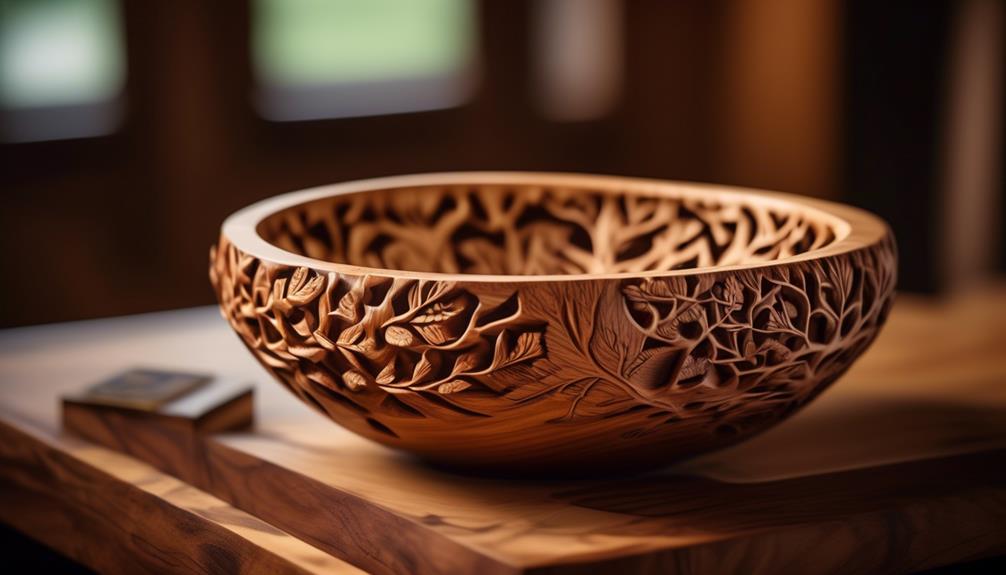
With its durable and attractive grain patterns, sweet-gum wood is highly sought after by craftsmen for creating unique and handcrafted furniture pieces.
The wood of liquid amber trees, commonly known as sweet-gum trees, is valued for its versatility in crafts and furniture. Due to the reddish-brown color and heavy density of sweet-gum wood, it's prized for crafting furniture and decorative items.
Craftsmen appreciate the suitability of sweet-gum wood for creating one-of-a-kind, handcrafted furniture pieces. Its durability and attractive grain make it an ideal choice for interior trim, flooring, and woodenware.
The versatile uses of sweet-gum wood in crafts and furniture contribute to its economic value and desirability for collectors. So, whether you're looking for a unique furniture piece or a decorative craft item, sweet-gum wood offers a beautiful and reliable choice.
Potential for Profitable Resale
The potential for profitable resale of Liquidambar tree species lies in their high-quality timber, fragrant resin, and ornamental value. Here are four reasons why they can be a lucrative investment:
- Commercial Value of Resin: The fragrant resin produced by Liquidambar trees is highly sought after in industries such as perfumery and incense production. This valuable resin contributes to the economic significance and potential resale value of these trees.
- Desirability in Landscaping: Some species of Liquidambar trees are cultivated for their ornamental value, making them desirable for resale in landscaping and urban environments. Their vibrant foliage and attractive shape can enhance the beauty of any space.
- Importance in Carpentry: Liquidambar trees produce high-quality timber that's in demand in the carpentry industry. This timber is used for furniture, flooring, and other woodcrafts, adding to the potential for profitable resale.
- Bonsai Market Appeal: The rarity, species, age, size, health, and overall aesthetic appeal of Liquidambar trees can influence their value for profitable resale in the bonsai market. Collectors are willing to pay a premium for well-maintained, unique specimens.
Considering these factors, it's clear that Liquidambar tree species have significant potential for profitable resale, making them an attractive investment for collectors.
Attractiveness to Wildlife
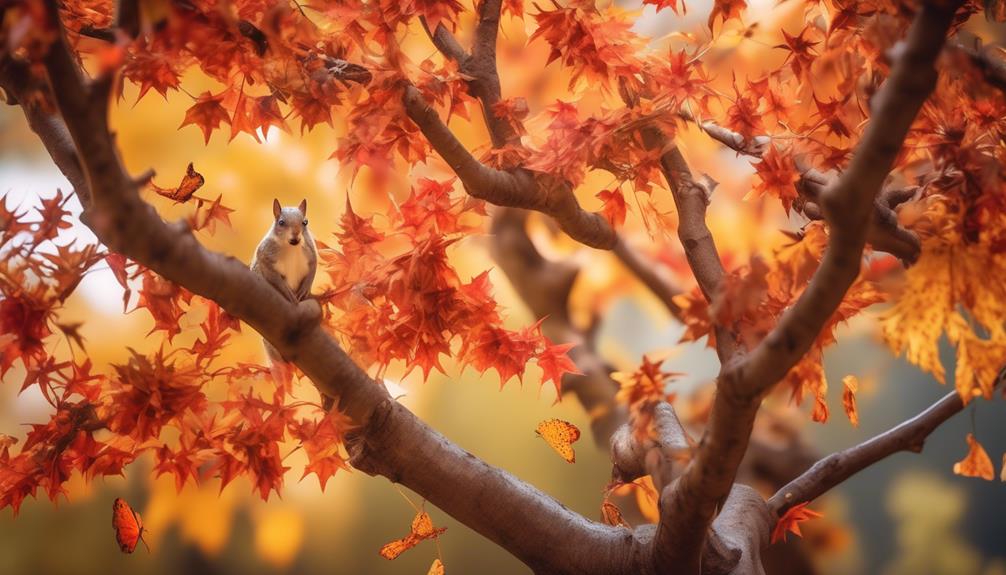
Sweet-gum trees' production of seeds that are consumed by birds, squirrels, and other small mammals makes them attractive to wildlife. These seeds are an important food source for many species, providing a nutritious and energy-rich snack.
In addition to the seeds, sweet-gum trees support a diverse insect community, including pollinators, which further contributes to their ecological importance for wildlife. The tree's fragrant resin, known as styrax, is also commercially valuable and may have an impact on wildlife attraction.
Furthermore, sweet-gum trees provide important habitat and food for various wildlife species, making them ecologically significant.
Growing Popularity Among Collectors
As wildlife enthusiasts appreciate the ecological significance and attractiveness of sweet-gum trees, a new trend is emerging among collectors who are drawn to the unique and vibrant fall foliage of the Liquidambar tree species.
The growing popularity among collectors can be attributed to several factors:
- Unique and vibrant fall foliage: Liquidambar trees, especially the American sweetgum species, display a stunning array of colors during autumn, ranging from fiery reds to warm oranges and yellows.
- Ornamental value: Collectors are captivated by the star-shaped leaves and spiky spherical fruits of Liquidambar trees, which add visual interest to any landscape.
- Fragrant resin: The sweet-gum trees produce a fragrant resin called styrax, which is highly sought-after by collectors for its aromatic properties.
- Medicinal potential: The potential medicinal uses of Liquidambar trees in traditional Chinese medicine have piqued the interest of collectors who value the therapeutic qualities of these trees.
With their unique features and ecological importance, Liquidambar tree species have become valuable additions to the collections of avid collectors.
Conclusion
In conclusion, Liquidambar tree species are highly valuable for collectors due to their historical significance, unique foliage patterns, vibrant autumn colors, exquisite fragrance, and rare availability.
They offer versatile uses in crafts and furniture, have the potential for profitable resale, and attract wildlife.
With their growing popularity among collectors, Liquidambar trees are a prized addition to any collection.

